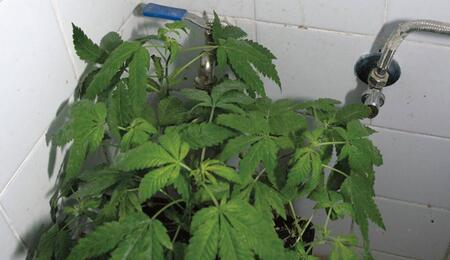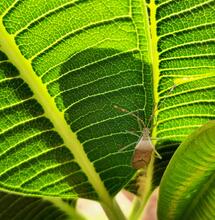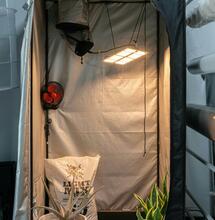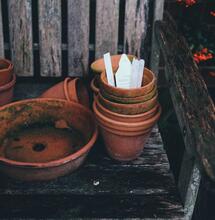Water Sources. Grow with Jorge Cervantes

.
Sources of Water:
Air conditioner water: Water condensed from an air conditioner or dehumidifier is very clean—virtually no dissolved solids. But the water does trap cannabis fragrance. Most A/C units generate 2 to 7.6–11.4 liters of water a day. Empty containers on a daily basis!
Rainwater: You can harvest 2000 liters of rainwater from 3 cm of rain that falls on a 93 m2 roof. Although slightly acidic in urban areas, rainwater is free of chlorine and pollutants or salts that normally occur in groundwater.
Clean rainwater is an excellent choice for irrigation. Collect runoff by plac- ing a barrel under a downspout. Mix the rainwater with tap water to dilute dissolved solids. Roofs and terraces can accumulate trash, which will pollute the otherwise clean rainwater. Covering your catch-barrel will prevent evapora- tion and keep out trash. To make sure it is not too acidic (acid rain) and harmful to plants, take pH and parts per million (ppm) readings from collected rainwater before using.
[caption id="attachment_11023" align="alignnone" width="779"] Distilled water is expensive and is best used in small amounts such as for watering cuttings and seedlings.[/caption]
Distilled water is expensive and is best used in small amounts such as for watering cuttings and seedlings.[/caption]
Rivers and streams: Usually, these water resources are publicly controlled. Alpine watersheds supply “mineralized” water—water with elements and nutri- ents that plants need to produce food and grow.
Tap water: Household water often contains chlorine and other dissolved minerals. Check two or three times a year with your local water bureau to find out what is in your water. Also check the pH regularly. See discussion above about water sources.
Clean your tap water by filling barrels and setting them 61–91.4 cm above the ground. Add ammonium sulfate to settle out the sodium, then siphon water from the top of the barrel, refilling after each watering to allow the chlorine to evaporate. Chlorine, like sodium, is beneficial in small amounts. It is essential to the use of oxygen during photosynthesis and is necessary for root and leaf cell division. But too much chlorine causes leaf tips and mar- gins to burn and leaves to turn a bronze color. Chlorine (which evaporates) and chloramine (which must be filtered to remove) are added to household water systems to kill bacteria, parasites, and other organisms. But both oxidize iron, manganese, and hydrogen sulfide, making them easier to filter out. Empty the barrel periodically, and scrub out residues and sediments.
Well water: Ground water is pumped from a well. Have your well water analyzed at least once a year because mineral content often changes with the seasons and over time. Do not assume that the mineral content will be the same as that of your neighbors’ well water. Most often well water is hard, with high levels of calcium and magnesium.
[caption id="attachment_11025" align="alignnone" width="779"] This reverse osmosis machine transforms water with a high ppm or EC into “clean” water with less than 10 ppm.[/caption]
This reverse osmosis machine transforms water with a high ppm or EC into “clean” water with less than 10 ppm.[/caption]
Purified Water
Bottled water enjoys minimal regula- tion in most countries. The US federal government for example, requires that bottled water be at least the same quality as tap water, but some studies show it is of lower quality. Frequently sold as “mineral water” for $1 to $4 USD per 4 liters, bottled water may contain more dissolved solids than tap water. If you are using bottled water, read labels care- fully to ensure that it contains less than 150 ppm (15 mg/L) dissolved solids (aka minerals).
Carbon filters are effective at removing chlorine, chloramines, sediment, and volatile organic compounds (paints, petroleum solvents, and hazardous wastes) from water. But they do not remove dissolved mineral salts from water. Use carbon filters as a pre-filter to reverse osmosis (RO) filters.
Deionized (aka demineralized) water has had its mineral ions removed. A water deionizer moves water through special ion exchange resins, complex sodium salts. These resins bind to the mineral dissolved solids (salts), filtering them out of the “pure” water. Deionized water is similar in purity to distilled water. Deionization does not specifically remove viruses or bacteria.
Distilled water has many of its impuri- ties eliminated via distillation, a process that boils water. The resulting vaporis captured and condensed into clean water. Purchasing distilled water is very expensive: $0.75 to $1 USD per 4 liters. But home distillation systems can cut prices to $0.25 USD per 4 liters. Distilled water is available at most grocery stores and home improvement centers. Gardeners often use distilled water for cuttings.
Electrodialysis-filtered water is
most economical to use in large- and medium-scale installations when desalinating brackish water and seawater. Smaller systems are also available. This process is most efficient when removing ionic components with a low molecular weight.
Water microfiltration systems remove suspended solids down to 0.1 microm- eters in size. Use microfiltration as a pre-filter to RO filters to extend the life of RO filters.
Other processes such as ultrafiltration and ultraviolet oxidation, also remove salts and pollutants from water. Check www.wikipedia.org for more information.
[caption id="attachment_11024" align="alignnone" width="780"] European bottled water has the guaranteed analysis printed on the label, but in the USA, no specific analysis is available on the label. The dissolved solids in this bottled water are measured in milligrams per liter (mg/L).[/caption]
European bottled water has the guaranteed analysis printed on the label, but in the USA, no specific analysis is available on the label. The dissolved solids in this bottled water are measured in milligrams per liter (mg/L).[/caption]
Reverse Osmosis (RO) Water
Reverse-osmosis machines are used to separate dissolved solids from water. These machines move the solvent (water) through the semipermeable membrane. The process is accomplished by applying pressure to the “tainted” water to force only “pure” water through the membrane. The water is not totally (EC of zero), but most of the dissolved solids are removed. The efficiency of reverse osmosis depends on the type of membrane, the pressure differential on both sides of the membrane, and the chemical composition of the dissolved solids in the tainted water. Unfortunately, common tap water often contains high levels of sodium (Na), calcium (Ca), alkaline salts, sulfur (S), chlorine (Cl) and other minerals. The pH could also be out of the acceptable 6.5 to 7 range.
Sulfur is easily smelled and tasted in water. Saline water is a little more diffi- cult to detect. Water in coastal areas is generally full of salt that washes inland from the ocean or sea. Dry regions that have less than 50.8 cm annual rainfall also suffer from alkaline soil and water that is often loaded with alkaline salts.
Jorge Cervantes is author of the Cannabis Encyclopedia (596 pages, 2,000+ color images, large A4 format) and Marijuana Horticulture (AKA the Bible). Booth books are available at all amazon retailers worldwide. The Cannabis Encyclopedia has an excellent chapter on water. Contact Jorge at www.marijuanagrowing.com.



.png)